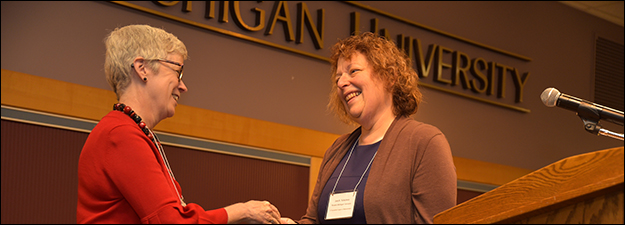Elite Identities and the Birth of Europe: Germanic Coins and Barbarian Medallions and Bracteates
Sponsoring Organization(s)
Imagines Maiestatis (IMAGMA)
Organizer Name
David Wigg-Wolf
Organizer Affiliation
Römisch-Germanische Kommission des Deutschen Archäologischen Instituts
Presider Name
Alan Stahl
Presider Affiliation
Princeton Univ.
Paper Title 1
The Technology of Early Barbarian Imitations
Presenter 1 Name
Aleksander Bursche, Kiril Myzgin
Presenter 1 Affiliation
Univ. Warszawski, Univ. Warszawski
Paper Title 2
Barbaric versus Barbarous: Some Methodological Remarks on Imitations of Ancient Coins
Presenter 2 Name
Tomasz Wiecek
Presenter 2 Affiliation
Univ. Warszawski
Paper Title 3
Barbarian Imitations, Networks, and the Formation of Germanic Elites
Presenter 3 Name
David Wigg-Wolf, Holger Komnick
Presenter 3 Affiliation
Römisch-Germansiche Kommission des Deutschen Archäologischen Instituts, Römisch-Germansiche Kommission des Deutschen Archäologischen Instituts
Paper Title 4
Imitation and Transformation: From Roman Medallions to Scandinavian Bracteates
Presenter 4 Name
Nancy L. Wicker
Presenter 4 Affiliation
Univ. of Mississippi
Start Date
11-5-2017 10:00 AM
Session Location
Fetzer 1010
Description
Interaction between Rome and the barbarians who lived to the north of the Empire was to shape the face of European society after the fall of the Roman Empire in the West. The contacts between the two worlds were a significant contributory factor in the formation of the new elites who were subsequently to settle in the territory of the old Empire and form the kingdoms of medieval Europe.
In order to appreciate this transformation fully it is important to understand how and why the new elites were formed, and evidence for this is provided by a previously neglected group of material: imitations of Roman coins produced by the developing elites right across the Barbaricum north of the Roman frontier, and used by them to demonstrate their status. These provide an unparalleled microcosm of this cultural meeting, a unique synthesis of Roman and indigenous societies. Furthermore, coins offer particularly rich potential, reflecting a wider range of functions and intentions, from official production to private usage, from economic to prestige roles, than almost any other class of material culture.
The session will analyse this representational art as a medium of expression of new social identities in early Medieval Europe that resulted from the contacts between Rome and the barbarians. They will consider a variety of aspects from the transfer of know-how, ideas and technology, to the role of iconography in the self-representation of the elites, and coins as symbols of power.
David Wigg-Wolf
Elite Identities and the Birth of Europe: Germanic Coins and Barbarian Medallions and Bracteates
Fetzer 1010
Interaction between Rome and the barbarians who lived to the north of the Empire was to shape the face of European society after the fall of the Roman Empire in the West. The contacts between the two worlds were a significant contributory factor in the formation of the new elites who were subsequently to settle in the territory of the old Empire and form the kingdoms of medieval Europe.
In order to appreciate this transformation fully it is important to understand how and why the new elites were formed, and evidence for this is provided by a previously neglected group of material: imitations of Roman coins produced by the developing elites right across the Barbaricum north of the Roman frontier, and used by them to demonstrate their status. These provide an unparalleled microcosm of this cultural meeting, a unique synthesis of Roman and indigenous societies. Furthermore, coins offer particularly rich potential, reflecting a wider range of functions and intentions, from official production to private usage, from economic to prestige roles, than almost any other class of material culture.
The session will analyse this representational art as a medium of expression of new social identities in early Medieval Europe that resulted from the contacts between Rome and the barbarians. They will consider a variety of aspects from the transfer of know-how, ideas and technology, to the role of iconography in the self-representation of the elites, and coins as symbols of power.
David Wigg-Wolf

